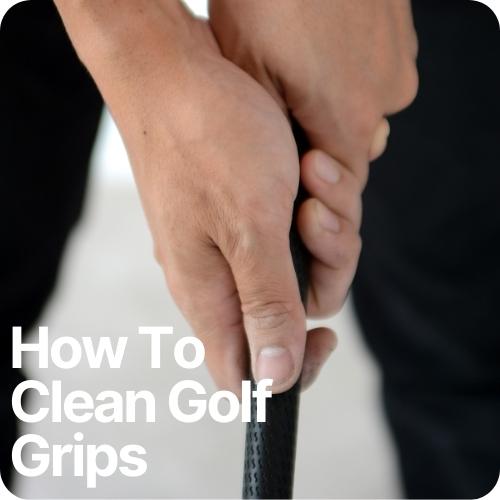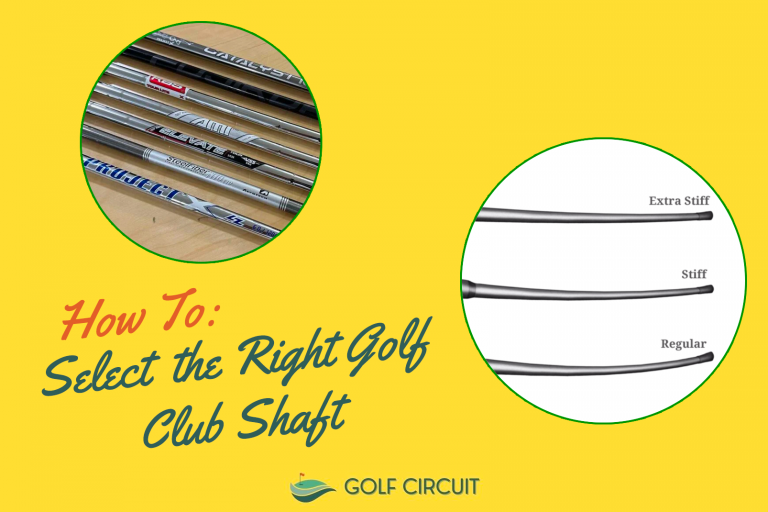What Wedges Should a Beginner Carry? (COMPLETE Guide!)

Trying to figure out what wedges should a beginner carry? Here is our guide!
Golf often appears to be a simple sport—hit the ball across a green and into a hole. Yet, anyone who’s tried learning the game quickly realizes that there’s a steep learning curve.
To compensate, many beginners look for the most expensive clubs to help them perform better.
Rather than starting with professional-grade wedges, though, we recommend finding a club that best suits your needs.
If you’re just starting out, consider carrying a pitching wedge and a sand wedge. If you’re playing a course with a lot of bunkers, you might also want to add a lob wedge to your bag. Ideally, the type of wedges you carry should be based on your experience and the type, of course, you’re playing style, so take time to consider your needs and buy from there.
This guide will dive into everything you need to know about wedges to help you figure out what wedges should a beginner carry (or which golf sets to buy).
We’ll explain why you need a variety of options and why it’s important to find clubs that suit you, not just the most expensive options.
So, if you’re ready to start improving your golf game, let’s begin!
Why Carry More than One Wedge?

As a beginner, you might be wondering why you need more than one wedge. Can’t you just use the same club for every shot?
The short answer is no—having a variety of wedges gives you more options and can help you play a better round of golf.
For example, a pitching wedge is going to have a different loft and bounce than a sand wedge.
The former is going to be better for long-distance shots, while the latter is going to be better for shots out of bunkers.
Different wedges also offer different degrees of spin. Like the 50 vs. 52 degree wedges.
If you’re looking to hit the ball high in the air, you might want to use a club with more loft.
If you want the ball to stop on the green, you might want a club with less loft.
According to Matt Stevens (a close family friend of Rory Sabattini), you only need two wedges—a pitching wedge and a sand wedge.
However, if you’re playing a course full of bunkers, you may also need a lob wedge on hand.
This will ensure that you have the full range of clubs needed to make it out of a sticky situation.
What’s the Difference between a Pitching Wedge and a Sand Wedge?
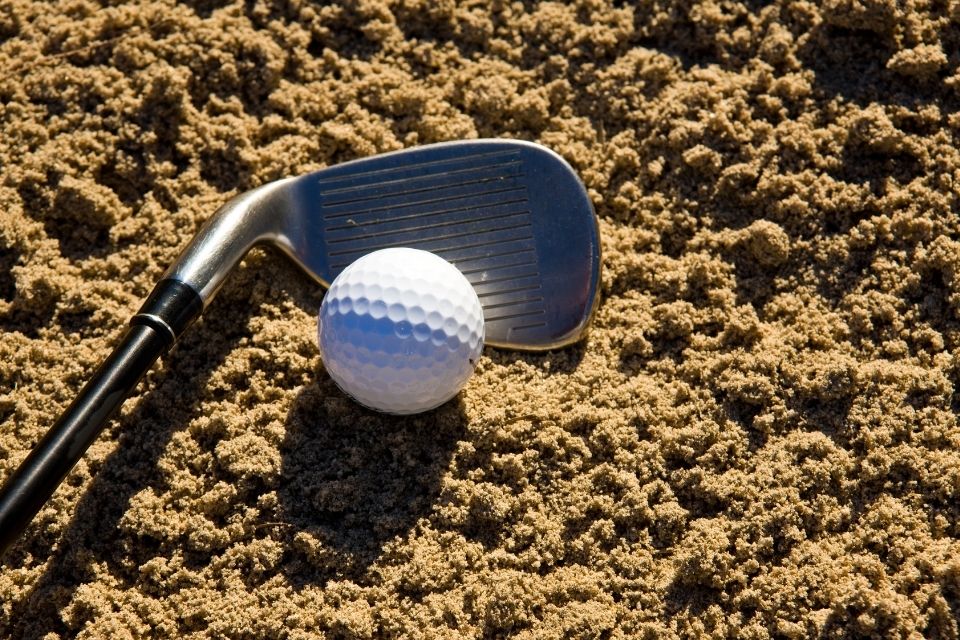
Now that we’ve answered the question, “How many wedges should a beginner carry?” it’s time to take a closer look at the types of wedges available. The two most necessary wedges are the pitching wedge and the sand wedge, but we’ll also explain what makes a lob wedge a lob wedge:
- Pitching Wedges – A pitching wedge is a versatile club that can be used for a variety of shots. It’s often used for tee shots, as well as approach shots when you’re close to the green. Pitching wedges typically have a loft of between 46 and 48 degrees.
- Sand Wedges – A sand wedge is a specialized club that’s designed for shots out of bunkers. It has a wide sole that helps prevent the club from digging into the sand. Sand wedges typically have a loft of between 54 and 58 degrees.
- Lob Wedges – A lob wedge is a specialized club that’s designed for shots with a high degree of loft. It’s often used for approach shots when you’re close to the green. Lob wedges typically have a loft of between 60 and 64 degrees.
With these three types of wedges in your bag, you should be able to make any shot.
For most beginners, though, they can manage similar shots with both a lob and a pitching wedge, making the lob less necessary as you’re honing your skills.
What Wedges Should a Beginner Carry: Pitching Wedge
Ok, so you’ve got your wedges. Now what? If you don’t know when to use which type, you’ll struggle to use them effectively.
To help you out, we’ve compiled a few basic tips and an overview of when to use your clubs, starting with the pitching wedge.
Compared to other clubs, the pitching wedge is widely versatile and can make various shots.
That being said, though, it’s usually reserved for tee shots and approach shots as you’re getting near the green.
This is thanks to its loft of 46-48 degrees. However, when using a pitching wedge, you should keep a few things in mind:
- Pitching wedges are designed for medium to long-distance shots. If you’re already quite close to the green, you may want to use a different club.
- Pitching wedges have a lot of loft, which means they can be difficult to control. If you’re new to golf, you might want to practice with a pitching wedge before using it in a game.
- Pitching wedges can be used for a variety of shots, but they’re often used for approach shots. Therefore, if you’re trying to get the ball closer to the hole, you might want to use a pitching wedge.
Though it may take time to perfect for technique with a pitching wedge, with some practice, you’ll soon find that it’s exactly what you need to get your ball as close to the pin as possible.
When Should You Use a Sand Wedge?
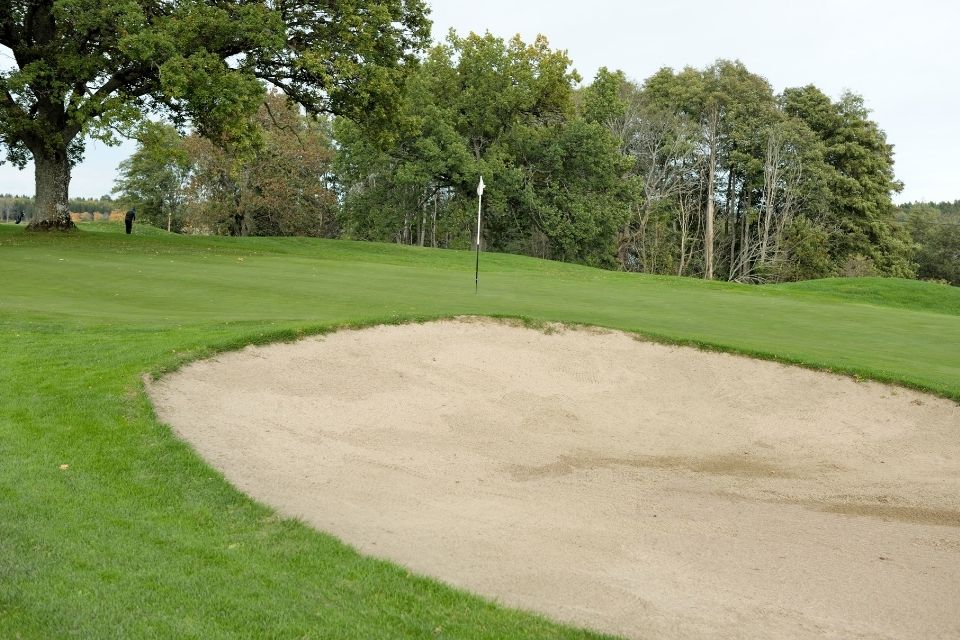
Compared to a pitching wedge, the sand wedge is specifically designed for hitting balls out of sand traps.
It has a wide, flat sole that helps to prevent the club from digging into the sand, and the clubface has more loft than a standard wedge, which makes it easier to hit the ball out of deep sand.
As a beginner, you’ll likely find yourself in the sand more than you’d like.
For this reason, you need a quality sand wedge to get your ball back onto the grass.
However, when using a sand wedge, remember to keep these points in mind:
- Sand wedges are designed for shots out of bunkers. If you’re not in a bunker, you might want to use a different club.
- The wide sole that makes a sand wedge ideal for a bunker shot can also make the club difficult to control. As with the pitching wedge, if you’re new to golf, you might want to practice your stroke before using it in a game.
- When using a sand wedge, open the clubface slightly to help prevent the club from digging into the sand and use a smooth, sweeping motion to hit the ball. Aim for a spot just behind the ball, and make sure to follow through after impact.
You’ll need to use a little more force than you’d use on the grass to get your ball out of a sand trap, but the more you practice making these shots, the sooner you’ll master the technique.
When Should You Use a Lob Wedge?
A lob wedge is most commonly used when a golfer is within 100 yards of the green and needs to hit a high, soft shot in order to land on the green and stop quickly.
This can be helpful in situations where a golfer is trying to avoid a hazard or when they don’t want the ball to roll too quickly once on the green.
Compared to a pitching wedge, the lob wedge is better for hitting softer, higher shots, whereas the pitching wedge is better designed for hitting the ball directly with greater force.
This takes a little more finesse than you might offer as a beginner, so we recommend first perfecting your pitching and sand shots.
As you start to practice with a lob wedge, keep these pointers in mind:
- Lob wedges are designed for shots with a high degree of loft. If you’re looking to hit the ball low, you might want to use a different club.
- When using a lob wedge, it is important to make sure that the clubface is square to the target at impact and that the hands are ahead of the ball at impact.
- When hitting with a lob wedge, it can be helpful to visualize the shot before taking it. This will help ensure that the shot is executed correctly and that your ball lands where you want it to.
Thanks to their high loft, many professional golfers will use a lob wedge to get their balls out of sand traps and other barriers.
However, if you’ve perfected your technique with a sand wedge, you should be fine without one.
Check out this video here to learn more about when to use a sand wedge or a lob wedge.
It’ll go into greater detail about which club is better suited to certain situations to help you get started:
Benefits of Using the Right Type of Wedge
Even professional golfers know that they need the right tools to make the perfect shot.
As John Stahlschmidt, the senior head instructor of the TOURAcademy, puts it, “choose a club that’s going to allow you to get there.”
Picking the wrong wedge can spell disaster for your game but knowing which club to use can result in victory.
Here are some of the biggest benefits of using the right wedge:
- More Control – Picking the wrong club can cause you to slice or hook the ball, making it more difficult to control your shot. The right wedge will offer more control over the ball, which is especially important when you’re trying to make a precise shot.
- Increased Distance – With the right club, you’ll also hit the ball further. The right wedge will add more spin and lift to the ball, making it travel further. It can also help you hit the ball higher, which will add more distance. This can mean the difference between making or missing a shot.
- Better Accuracy – With more control over the ball, you’ll be more likely to accurately hit your shots. This is especially true as you master the techniques needed to use each type of wedge.
- Improved Score – All of these factors can lead to an improved score. And, at the end of the day, that’s what the game is all about. You’ll soon be knocking strokes off your game and walk away the victor in no time.
Which Wedges Should A Beginner Carry?
Now that you know the types of clubs you should be carrying as a beginner, we wanted to introduce a few specific options that’ll act as a good launching point for your game.
We’ve broken these options down based on the types of clubs and also given a short explanation as to why you should consider using them below.
Callaway Big Bertha B21
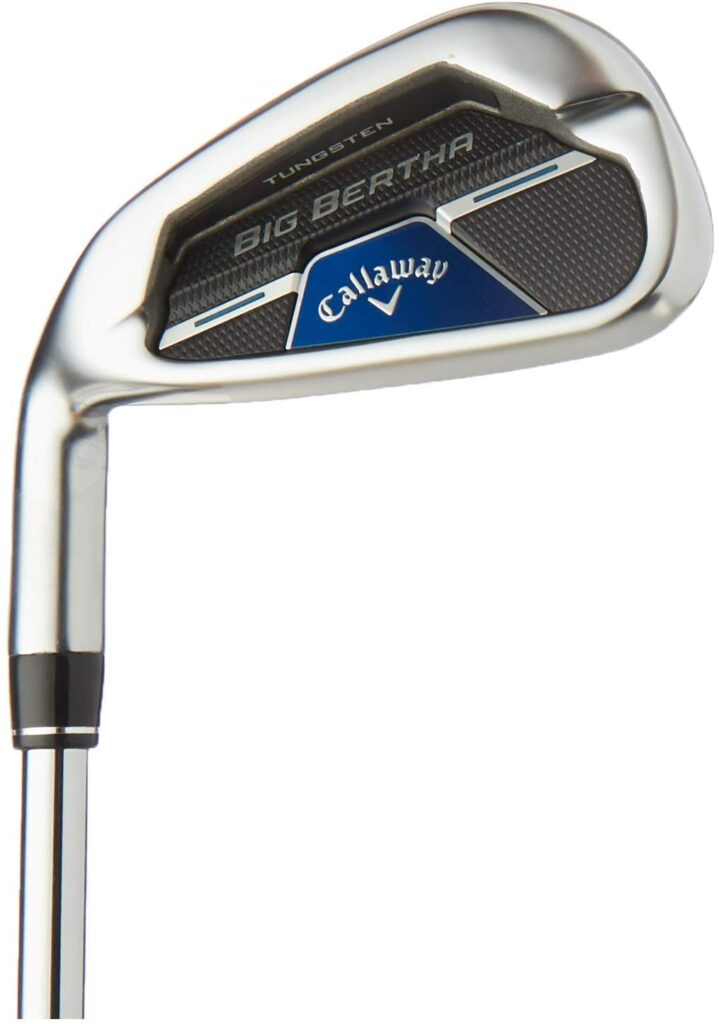
The Callaway Big Bertha B21 pitching wedge is an excellent option for beginner golfers as it offers a forgiving and easy-to-control head and handle.
Thanks to its Flash Face Cup design, you’ll be able to put the desired amount of spin on your ball, as well as benefit from supreme turf tension for easy launching.
Wilson Harmonized Golf Sand Wedge

Not only is the Wilson Harmonized sand wedge one of the most affordable options on the market, but it also offers high chips and easy-stopping power.
Its uniquely shaped head puts the right amount of spin on your ball so that it stops almost immediately on impact with the green.
Callaway PM Grind Wedge
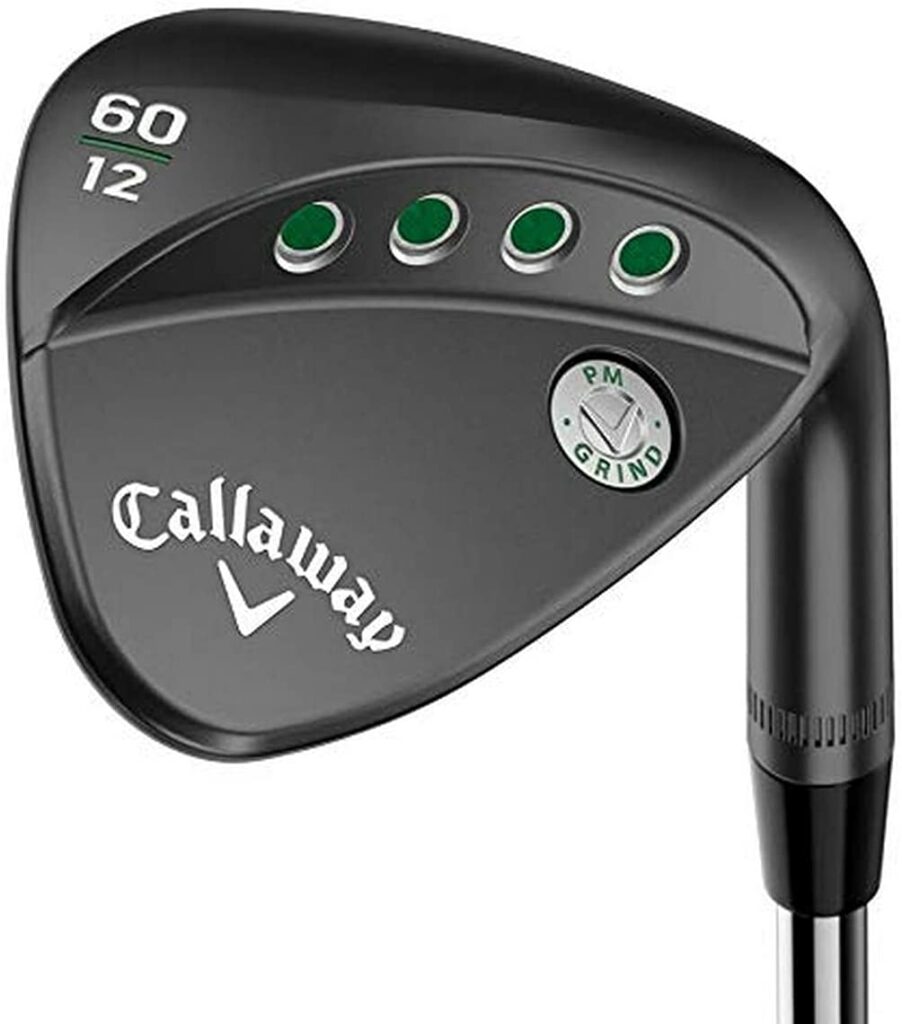
If you’re ready for a lob wedge, you can’t go wrong with the Callaway PM Grind Wedge.
Its Groove-in-Groove technology, paired with a unique high toe design, is perfect for creating spin without sacrificing control.
Although it’s designed for more advanced golfers, this is a wonderful club to build up to.
With these wedges in your bag, you’ll have everything you need to get your ball onto the putting green. Check them out and give them a try today!
Final Thoughts
As a beginner, it’s easy to get overwhelmed by the different types of available golf clubs.
This guide explains which wedges you should use and offers some general tips on when/how to use each.
Keep these tips in mind the next time you’re at the golf store, and you’ll be sure to walk away with the perfect set of wedges for your game.




